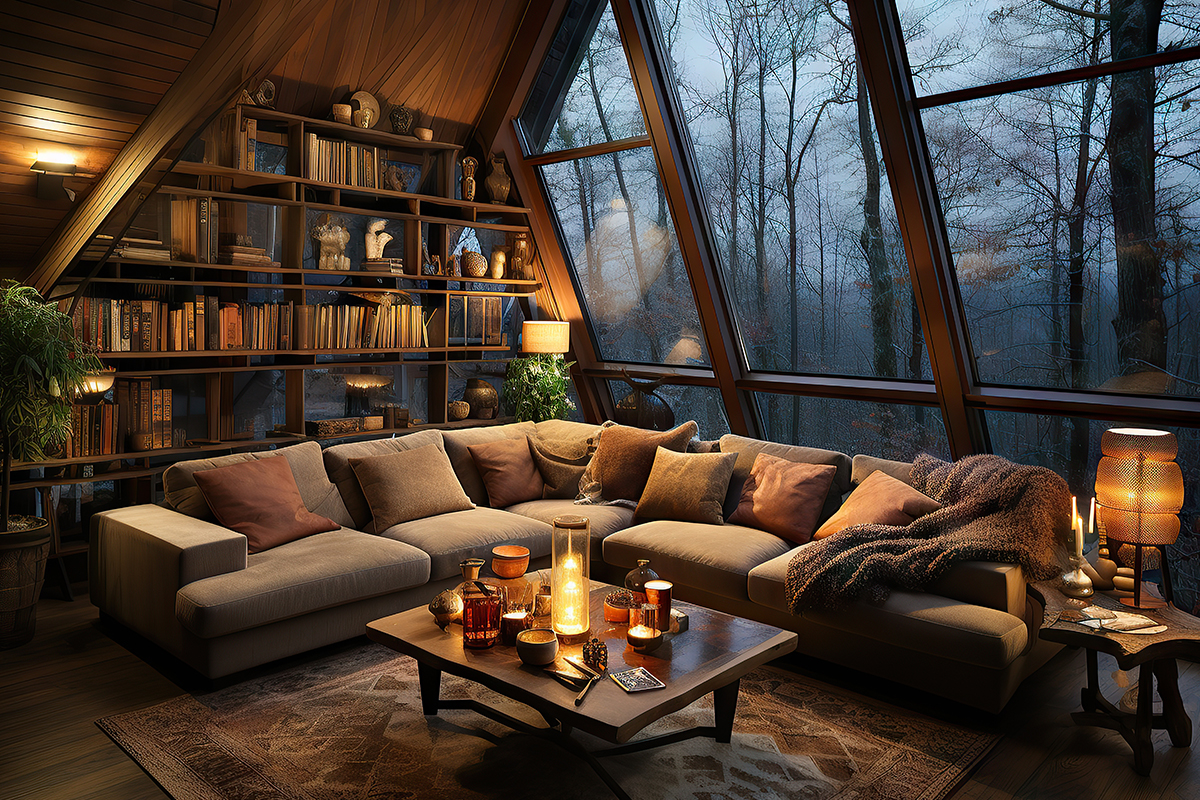Lighting helps to create an atmosphere of cosiness and comfort in the house. The right light can emphasise the style of the interior and provide the necessary functionality at night. In this article we will look at how lighting can make any home cosy, what types of light are best suited for different rooms, and how to play with different types of lighting fixtures to achieve the desired effect.
Dividing into lighting levels: main, accent and decorative lighting
One of the main principles of cosy lighting is the correct division of light into three levels: main, accent and decorative lighting. Each of these levels fulfils a different task, creating a multi-level lighting atmosphere that adds depth and warmth to the interior.
Main lighting
Provides even lighting throughout the space. Usually ceiling lights, chandeliers or built-in lamps are used for main lighting. It is important that the main light is not too bright and does not create sharp shadows. You can use ceiling lights with frosted luminaires that diffuse the light and make it soft and pleasing to the eye.
Accent lighting
Accent lighting is light aimed at emphasising certain areas or objects in a room. It adds depth to an interior and helps to emphasise important details. For example, table lamps or wall sconces can be used to highlight a painting, a bookshelf or a cosy nook.
Decorative lighting
Used to create mood and atmosphere. This can include warm glow lights, garlands and LED strips. These light sources add romantic and festive touches to the interior. For example, decorative lights can be used in the bedroom to create a soft and relaxing light before bedtime.
Warm or cold light: how to choose the right temperature
When choosing lighting to create cosiness, you need to consider the colour temperature of the light. There are two main types of light: warm and cool. Each of them creates a different atmosphere.
Warm light
Warm light (around 2700-3000 Kelvin) creates a cosy and relaxing atmosphere, ideal for living rooms, bedrooms and lounge areas. This type of light resembles the natural glow of a sunset and creates a feeling of warmth and tranquillity.
Cold light
Cold light (with temperatures above 4000 Kelvin) is more suitable for work areas such as the kitchen, bathroom or office space. Cold lighting helps concentration and increases performance, making the space feel brighter and more energetic.
It’s important to remember to combine warm and cool light depending on the functional areas in the room. For example, in the same room, you can use cool light for the desk and warm light for the lounge area.
The role of dimmable lighting in creating ambience
Adjustable lighting also helps to create a cosy home. Lights that can be controlled in brightness allow you to adapt your lighting to your mood or specific needs.
Dimmers for lighting
Dimmers – devices that allow you to change the intensity of light – are great for this effect. For example, in the living room, you can turn on bright lights for evening gatherings with friends and dim them to create an intimate setting before watching a film. In the bedroom, dimmers also play an important role as they allow you to gradually reduce the brightness of the lights before bedtime, creating a relaxing atmosphere.
In addition, dimmable lighting helps to save energy, as you can adjust the brightness of the light to what you really need without having to switch the lights on at full power. Not only is this environmentally friendly, but it also makes the home more cosy, as overly bright lights can make you feel uncomfortable.
So, light is not just a way to illuminate a space, but a powerful tool that helps to accentuate style and create a cosy home. Choose your lighting wisely, combine different types of light and experiment with its temperature and brightness to make your home truly comfortable and cosy.


